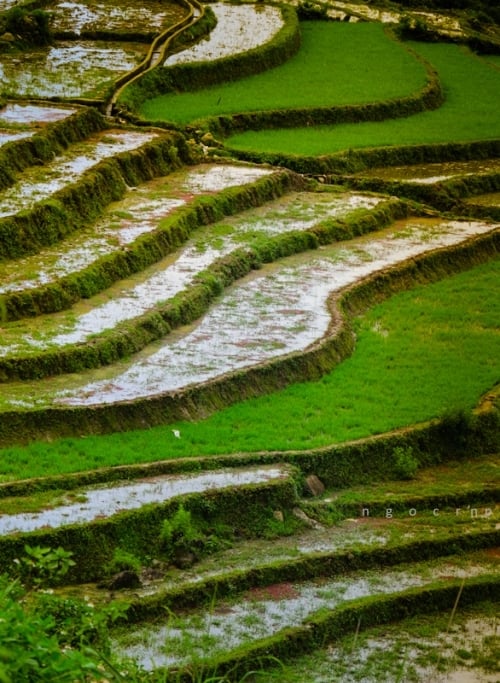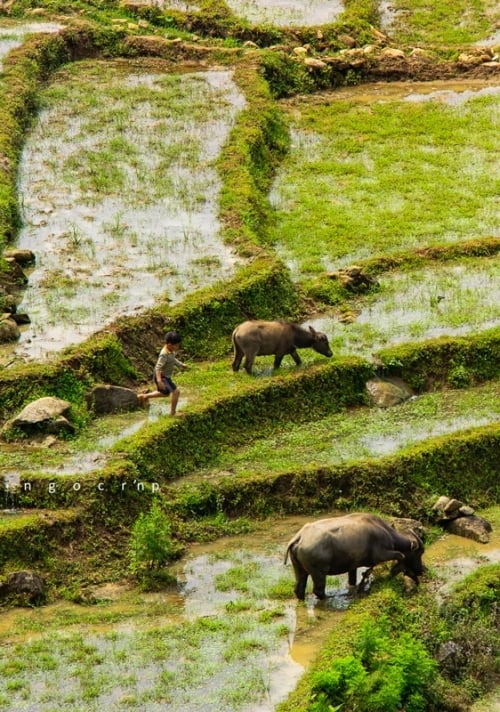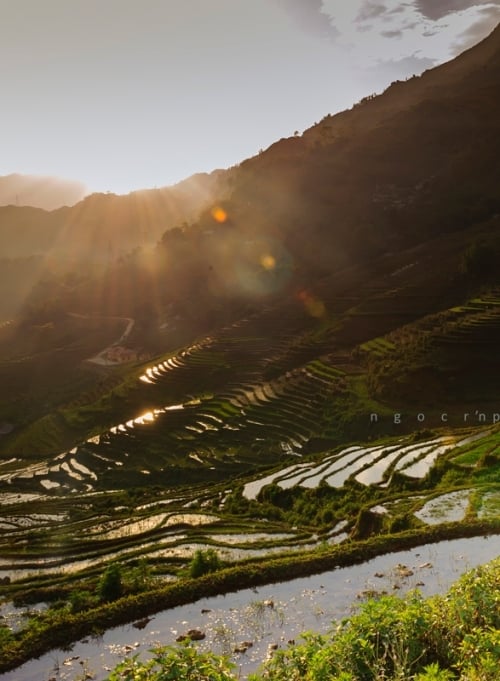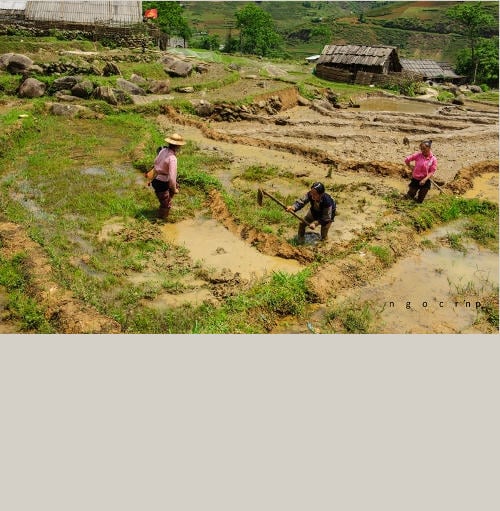The terraced fields in Ta Van are most beautiful this season when some fields have just been sown, others have just been transplanted or are still being plowed. In some places the water is sparkling clear, next to it is murky or lush green. The different color patches lying side by side seem to "honor" each other silently, creating a vivid picture.
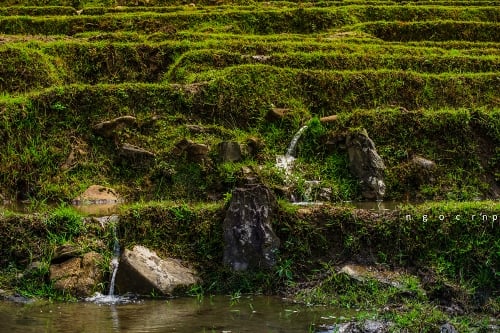
The ditches carry water from streams to fields.
The Mong and Giay people in Ta Van village start cultivating their fields in the third lunar month, a few days before or after the Qingming Festival. They make the first hoe cuts on good slopes, where there are water springs or near river and stream sources. The Mong and Giay people work together to break the ground, dig ditches, build embankments to prepare to bring water from the stream to the fields for the new crop.
During the rainy season, each family will gather their brothers and sisters to plow and harrow, so that the land can be prepared quickly. The Mong and Giay people also exchange labor. Women build the banks, men hoe the fields. After dumping the fields, they let water soak the soil. The longer and more thoroughly the soil is soaked, the better the field will be.
After the last hailstorms have passed, it is time to sow the rice seedlings. This is the fourth lunar month, which corresponds to about May in the solar calendar. The land is harrowed again until smooth and leveled before the young seedlings are sown in the fields. The fields are left fallow, plowed and harrowed gradually according to the amount of rain that falls. The fields near water sources or with water veins are plowed first and become the water storage areas for the next fields. Initially, they plow 4-5 fields, storing water to drain the water to the other fields the next day. In this way, when the next rain comes, they can continue to work 2-3 dozen fields. The fallow season lasts throughout May and June.
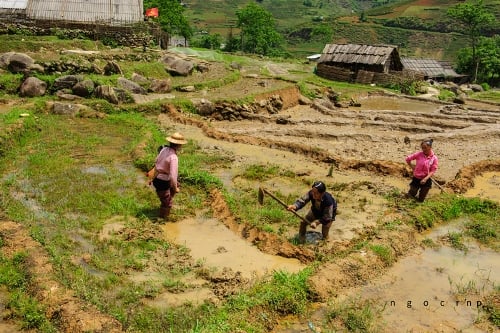
Giay women.
In the past, the people of the Sa Pa highlands used to incubate rice seeds in wooden barrels, now they are incubated in bags, wrapped around with mugwort stems. The seeds are incubated for a day and a night or a day and two nights and watered in a ratio of 1 hot - 2 cold. When they germinate, they are sown in fine soil. The fields hug the seedlings tightly for 1-2 days for the roots to take hold, then the water is drained again for the rice to germinate. Two days later, when those young shoots are "exposed" to spring up, the rice growers on the mountainside bring water back to the fields for the seedlings to "bloom", and then more than a month later they will be pulled up and planted.
The rice season in Ta Van usually comes earlier than in other areas along the Northwest. Therefore, the rice fields in this valley will ripen very early, in the first days of September, when autumn begins. At that time, Ta Van will send another very brilliant call to the hearts of wanderers.

